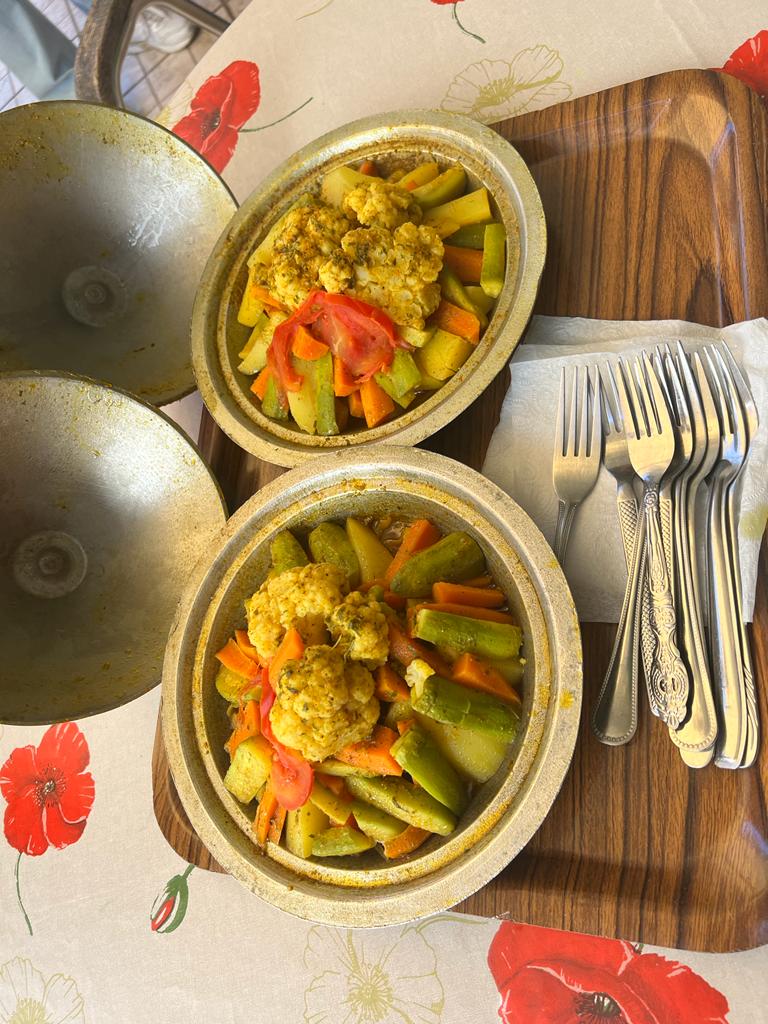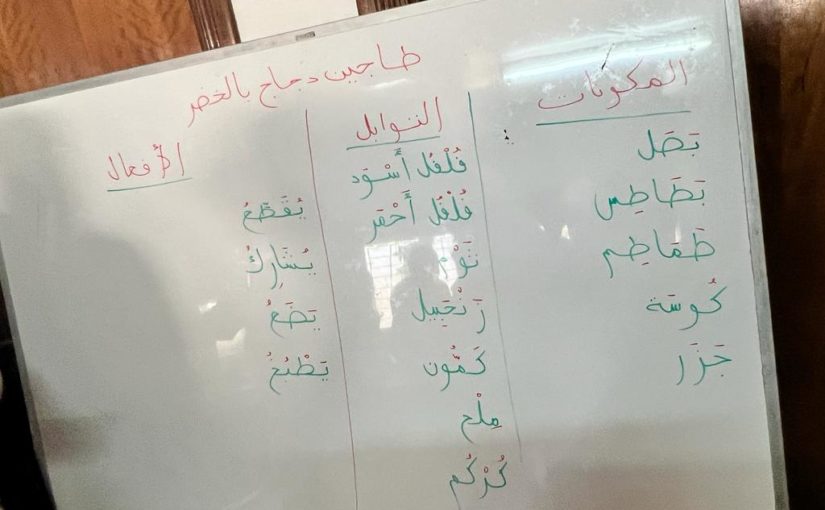I am from Nigeria, a country in Western Africa, while Morocco, the site of my summer language abroad program is a country in Northern Africa. Before leaving the US, I naively assumed that Moroccan food would be very similar to what I was used to back home. To my surprise, the food is very different. Going through the grocery stores, the main foodstuff that is common to us are rice, bread, pasta, and noodles. Others are remarkably different!
Morocco is rich in different cuisines, and one remarkable thing about their meals is the use of lots of spices, which not only adds flavor to meals but is also very nutritional and medicinal. My language institute provides us with breakfast and lunch while we would usually go to restaurants for dinner or prepare something individually. In my experience, the three most popular components of Moroccan meals are bread, shay’ and tagine. The first thing I noticed about meals in Morocco was the presence of bread with virtually every meal – breakfast, lunch, or dinner. For breakfast, we would usually have bread and other pastries with jam, honey, hard-boiled egg or omelet, cheese, as well as shay’ (tea). For lunch and dinner, we would usually have bread with different kinds of soup, along with other meals. My favorite soups have been meatball soup and lentil soup.
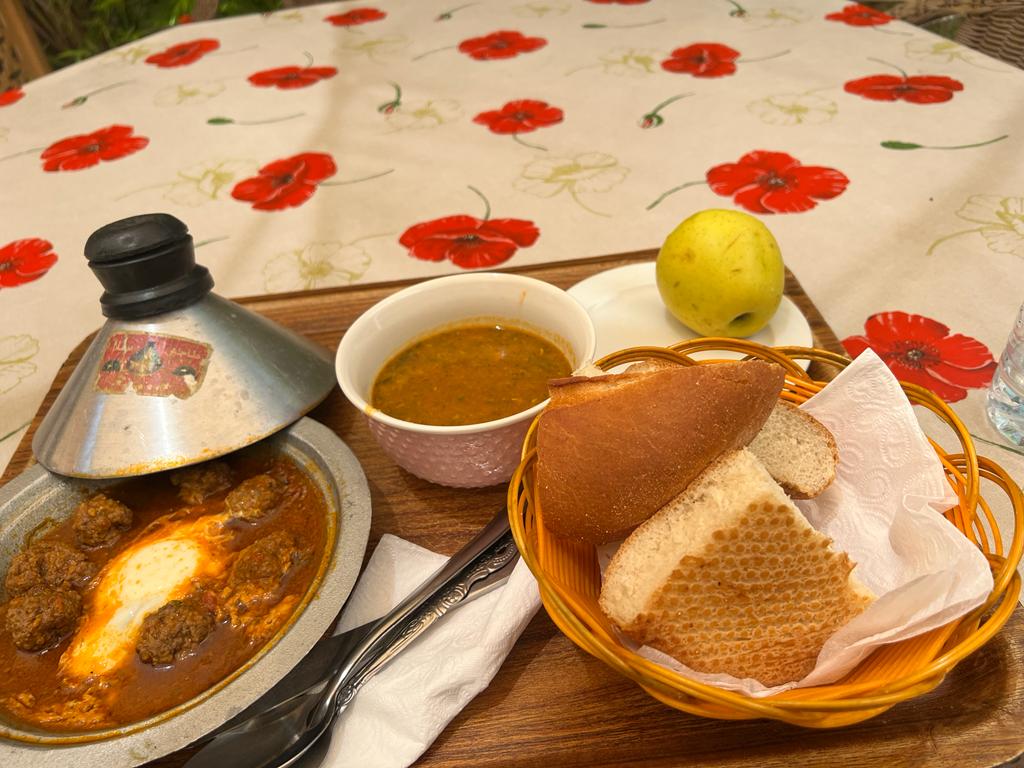
Moroccan shay’ or tea is another regular accompaniment to meals especially breakfast. No breakfast is complete without shay’! This tea is not made with a tea bag as we do in America. Instead, it consists of several herbs brought to boil. You could have shay’ with or without sugar depending on your preference, and it is often served with na’na (mint) leaves. Moroccan cuisine also has lots of local pastries and deserts ranging from very sweet to sweet-sour to sour taste.
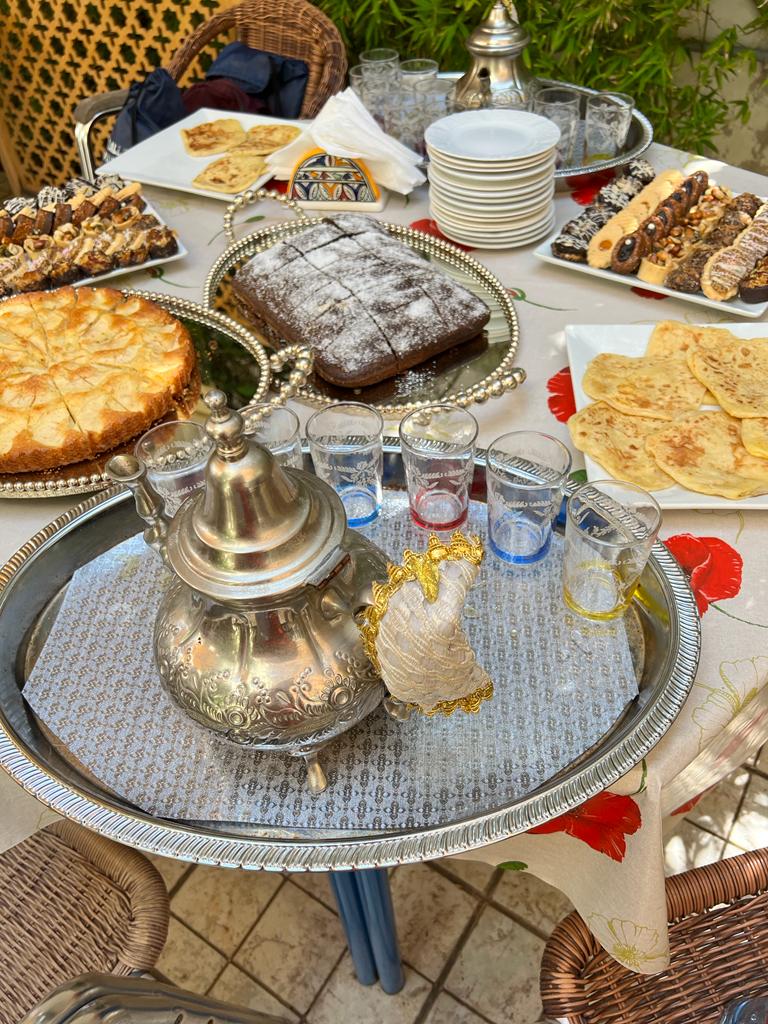
Tagine is the Moroccan word that refers to both the name of the cooking pot used in preparing the dish as well as the name of the meal itself. A tagine is usually cone-shaped and can be made from ceramic or unglazed clay but the latter adds a rustic, earthy flavor and aroma to whatever is being cooked in it. The base of a tagine is wide and shallow while the conical lid helps to return condensed steam back to the food. The tagine is usually placed above the heat source and not directly in contact with the fire or heat.
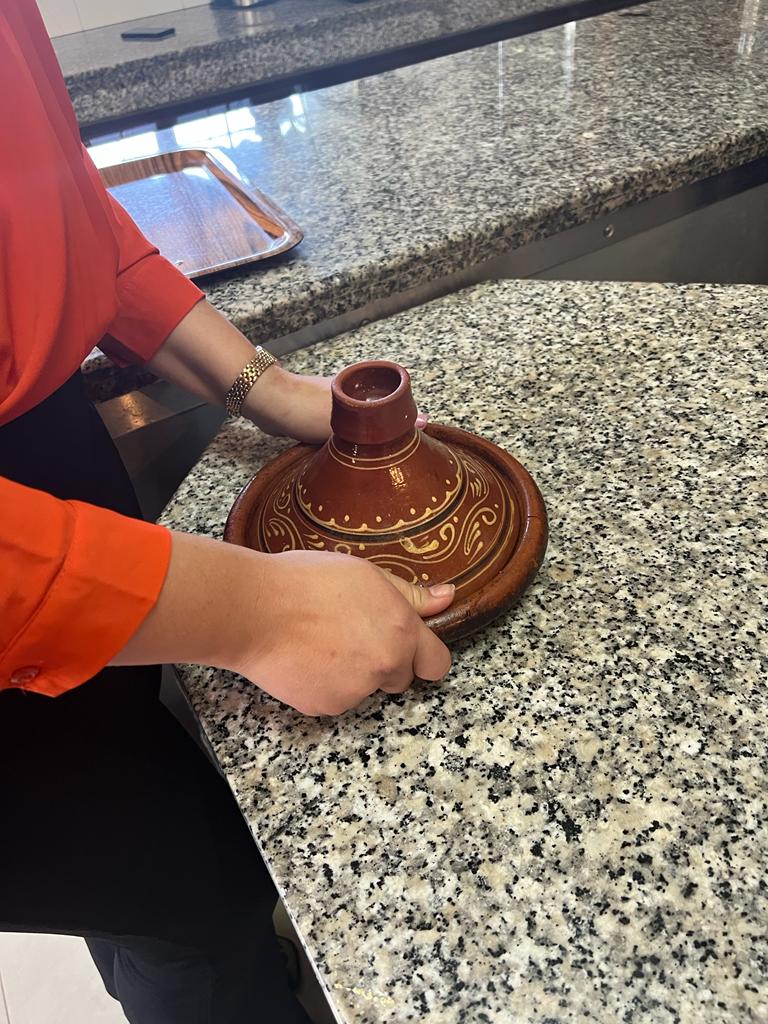
With regards to the meal, there are different types of tagine depending on the constituents as it can be prepared with various types of protein or vegetable combinations. Most recipes layer meat, chicken, or vegetable along with spices, oil, and water. As the mixture cooks, a stew-like consistency develops giving a flavourful sauce that is often scooped with bread or sometimes served with couscous which is another common feature in Morrocan cuisine. I am most familiar with tagine bi dajaja (chicken tagine), tagine bi lahm (meat tagine), and tagine bi khudar (vegetarian tagine). Of these, my favorite is tagine bi dajaja (chicken tagine), and the ingredients for this include chicken, olive oil, potatoes, onions, tomatoes, green bell pepper, red bell pepper, carrots, black pepper, garlic, ginger, salt, coriander, cauliflower, and squash.
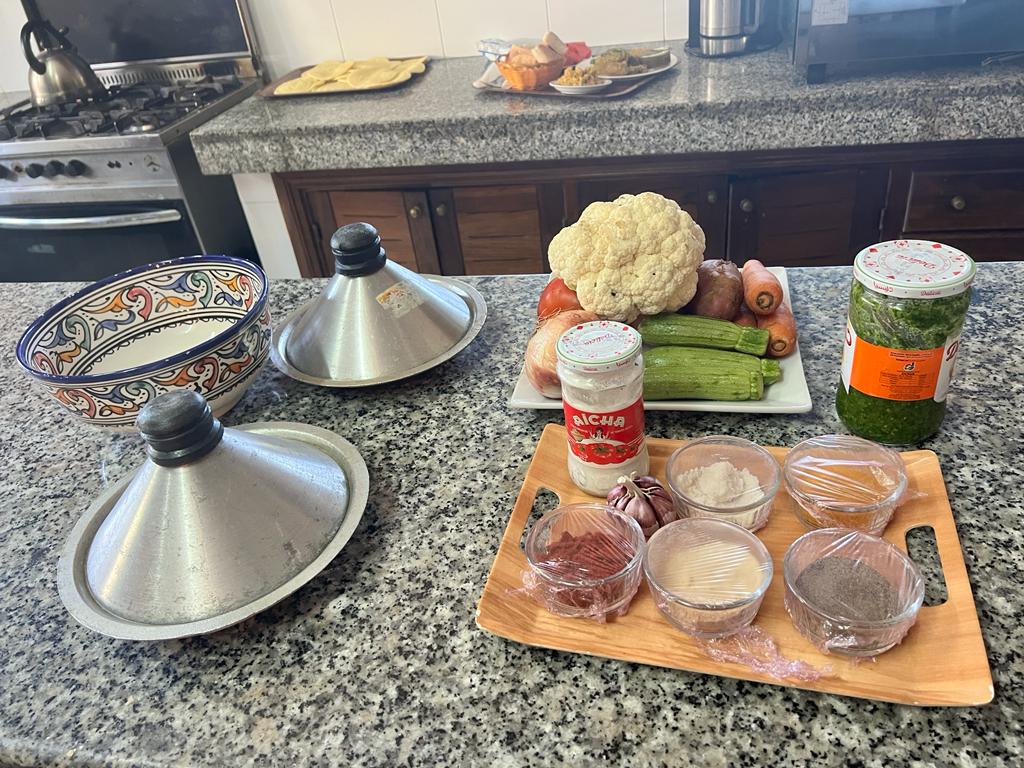
To prepare the meal, you first layer the tagine vessel with onions to prevent the chicken from sticking to the bottom and burning. In a separate bowl, you add oil, water, and then the spices ( salt, black pepper, garlic, ginger, coriander, etc). Then you put in your chicken, carrot, potatoes, squash, and cauliflower which must have already been cut into sizeable chunks, and mix it thoroughly. Thereafter, you start to layer these on the onion base in the tagine. Lastly, pour the remaining broth into the bowl on the mixture and add water if necessary. Then, put the tagine above the heat source, wait for about 20 minutes, and your dish is ready!
